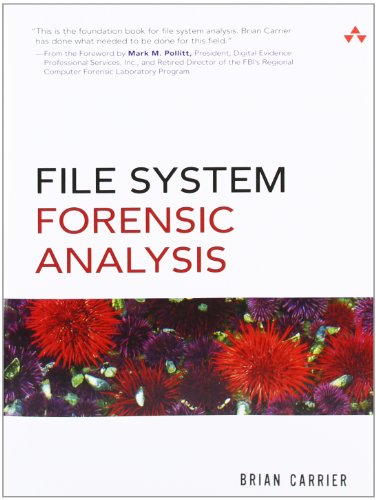File System Forensic Analysis book download
Par calzada eric le jeudi, septembre 22 2016, 06:36 - Lien permanent
File System Forensic Analysis by Brian Carrier


File System Forensic Analysis Brian Carrier ebook
Page: 600
Format: chm
ISBN: 0321268172, 9780321268174
Publisher: Addison-Wesley Professional
I'm writing this article for two main reasons. File System Forensic Analysis : Let's create a directory in our /root (the root user's home) directory called /root/ntfs_pract/ and place the file in there. No Windows/Mac/Linux file systems forensics or Cisco hardware network forensics? Understanding EXT4 (Part 1): Extents · 3 comments Posted by Hal Pomeranz Filed under artifact analysis, Computer Forensics, Evidence Analysis While I had read some of the presentations[2] related to EXT4, I was curious about how the EXT4 structures actually looked on disk and how and why the changes made in the EXT4 file system broke existing forensic tools. Most digital evidence is stored within the computer's file system, but understanding how file systems work is one of the most technically challenging concepts for a digital investigator because there exists little documentation. Most digital forensics evidence is stored within the computer's file system, but working with file systems is the most technically challenging aspect of forensic analysis. Sorry if this is in the wrong place but I have tried to find articles about this topic but they all seem to be dead discussions or not directly related. First, I've got an anti-forensics class to teach, so I have to learn it anyway. So I decided to fire up the old hex editor and see for myself. Forensically interesting spots in the Windows 7, Vista and XP file system and registry.